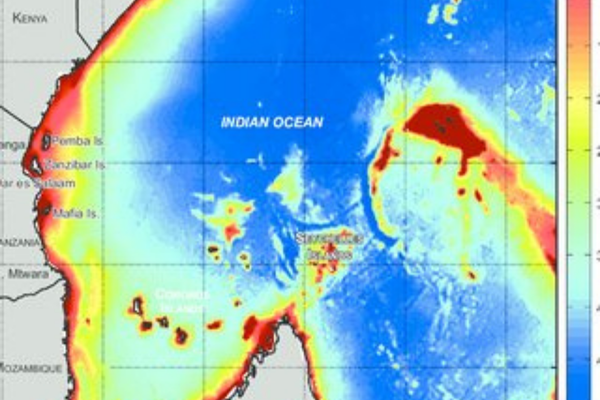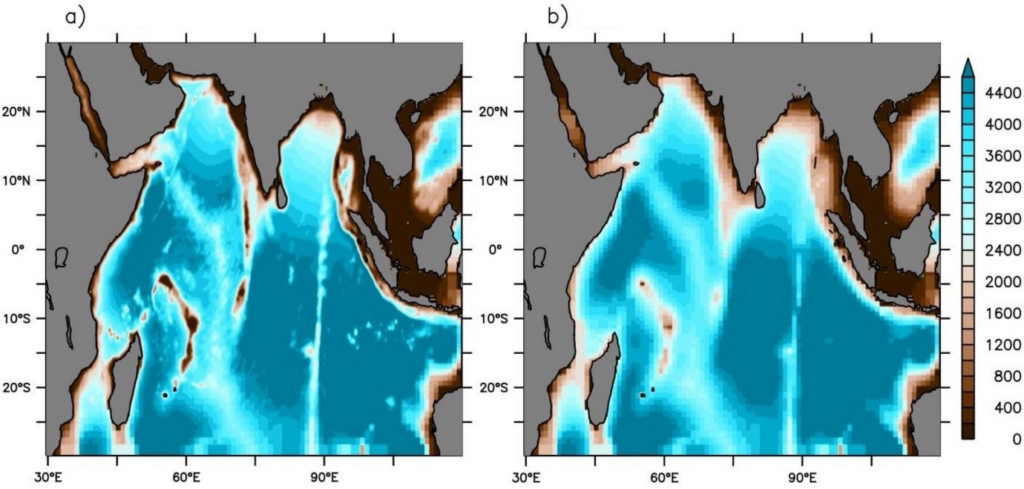Recently, a study titled ‘Impact of bathymetry on Indian Ocean circulation in a nested regional ocean model’ was undertaken by scientists from the Indian National Centre for Ocean Information Services (INCOIS).
- Bathymetry involves mapping the depths of various water bodies, including rivers, seas, and oceans.
Key Findings of the Study:
- East India Coastal Current (EICC): At depths of 1,000 meters and 2,000 meters, the EICC flows in the opposite direction to surface currents. This finding contradicts previous models and highlights a more accurate representation of the EICC’s behavior at depth.
- Equatorial Under Current (EUC): The EUC, influenced by the presence of the Maldives Islands, extends westward and displays significant seasonal variations. During the northeast monsoon, it’s centered on the equator and can be found as deep as 150 meters.
- Currents along Andaman and Nicobar Islands: A significant boundary current was identified at a depth of 2,000 meters along the coast of these islands, indicating complex deep-sea dynamics not previously recognized.
- Salinity and temperature: The study confirmed that salinity and temperature measurements of the upper ocean are very close to observed values near the coast, validating the improvements in ocean modeling.
- The study’s insights are crucial for improving weather and climate forecasts, which affect not only environmental understanding but also maritime and economic activities.
Ref:Source
| UPSC IAS Preparation Resources | |
| Current Affairs Analysis | Topperspedia |
| GS Shots | Simply Explained |
| Daily Flash Cards | Daily Quiz |



